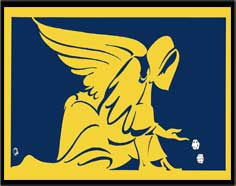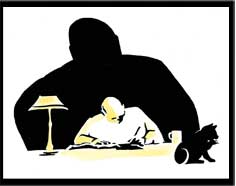There was little organised crime in Sydney in the nineteenth century, because there was little to organise. But in the first decades of the twentieth century, in response to pressure from churches and other groups concerned with morality, parliament passed a series of laws outlawing or restricting activities that had previously been legal or tolerated. Buying alcohol after 6.00pm, gambling away from a racecourse, paying for sex, and consuming drugs such as cocaine, all became illegal, or more so than before. It was Australia’s version of Prohibition, albeit in more modest form, and the results were similar to those in America. Crime blossomed and achieved the critical mass needed for organisation to occur and for the poorly paid police – some demoralised by having to uphold laws that effectively criminalised a large proportion of the population – to be corrupted. It was a pattern that continued for much of the twentieth century.
The first really successful organised criminals emerged in the 1920s. Sydney’s biggest brothel owner was ex-prostitute Tilly Devine, assisted by the Police Offences (Amendment) Act of 1908, which outlawed men but – thanks to a sexist oversight – not women from running such places. By the end of the decade she was operating 18 brothels in East Sydney.
In 1927 the Dangerous Drugs (Amendment) Act was passed, stopping most people buying cocaine and opiates from pharmacists. This produced a thriving illegal trade. Devine’s husband and sometime business partner, Jim Devine, sold cocaine to her workers, which became another profitable source of income.
In 1916 the government passed the Liquor Act, which made the sale of alcohol illegal after 6.00pm and created the sly-grog industry, which thrived until the law was repealed decades later, after World War II. The most successful sly-grogger from 1919 was Dubbo-born Kate Leigh, who at her height ran more than 20 illegal drinking places, catering to all classes of society. Reputedly a police informer, she was also the city’s biggest cocaine dealer (hence the nickname “the Snow Queen”), fenced stolen goods, and for her own amusement shoplifted at Mark Foys department store, an enormous building that today houses the District Court.
There were some 5,000 drug addicts in Sydney in the 1920s, most using cocaine. The drug could still be bought from pharmacists on prescription, but most was smuggled in from Asia by Chinese sailors and locals, who sold it in bulk to distributors like Kate Leigh.
One of Sydney’s most notorious crimes, the Shark Arm Murder, involved a drug importer. Reginald Holmes was a boat-builder with premises on the shore of Lavender Bay and a prestigious residence at McMahon’s Point. He employed men to drive fast motor boats out to sea and collect packages of cocaine and other goods thrown overboard from ships.
On Anzac Day in 1935 a four-metre Tiger Shark, which had been caught and put into a big indoor pool at what is now the Palace Hotel in Coogee, vomited up a human arm. After an investigation, police decided the limb belonged to a criminal named Jim Smith. He’d been killed by one Patrick Brady, who had cut off the arm and brought it to Lavendar Bay in a mysterious attempt to blackmail Holmes.
Smith’s body was never found and there was not enough evidence to charge Brady, so a coronial inquest was ordered. On the morning of the inquest, Holmes was found shot dead in the driver’s seat of his Nash sedan. The inquest came to no conclusion about Smith, but in a final twist, police concluded Holmes had probably been killed by a hitman hired by himself, in a bizarre act of suicide.
Both Tilly Devine and Kate Leigh employed gangs of toughs to protect their businesses from the standover men that spring up with any sort of prohibition, and they themselves extorted money from weaker criminals. This led to a dramatic increase in violence and in 1927 the weapon of choice became the cutthroat razor, used to intimidate and – in days before cosmetic surgery – permanently disfigure. There were 500 recorded slashings in three years, and the area around Darlinghurst became known as Razorhurst. Criminals were thriving and the police, even those not on the take, were unable to stop them. Truth newspaper declared in 1929, “Crime in Sydney has become an organised profession.”
While the so-called victimless crimes of people like Devine and Leigh were often tolerated by many people, the increase in public violence was not. In 1930 parliament passed the New South Wales Vagrancy (Amendment) Act that made it illegal to be seen habitually with reputed criminals or people with no visible means of support. Alfred McCoy, in his Drug Traffic, calls this “one of the most authoritarian and effective measures against organised crime ever passed in a Western democracy”. Police numbers were increased and it became illegal to carry a razor. Within months the level of violence dropped. It took longer – about five years – but the cocaine trade was finally crushed too.
The consorting laws were Draconian, but according to McCoy, “In the small town atmosphere of Sydney in the 1930s it was generally understood who the targets were to be, and there were few abuses of these exceptional powers and fewer civil libertarian qualms”. Still, the law gave police extraordinary powers that Justice Wood noted, during his Police Royal Commission of the 1990s, eventually became “an instrument for corruption and for the establishment of improper relationships”.
While the drug trade was finished by the mid-thirties, the brothel and sly grog businesses continued to thrive, especially during World War II. Kate Leigh, for a while one of the richest people in Sydney, stayed in business until the early 1950s, and was bankrupted by the taxation authorities in 1954 – although the repeal of six o’clock closing the next year would have finished her off anyway. She died in 1964. Tilly Devine, at one time known as Queen of the Loo, was also hit hard by the tax men but struggled on, closing her last brothel in 1968 when the law that allowed women to live off the earnings of prostitutes was repealed. Moving out of her last premises, which were fire-bombed by the competition, she went on the old age pension and died two years later.
Devine and Leigh were the first but not the last organised crime figures to become celebrities, and to be regarded by many who’d never met them with something like affection. When Robert Menzies was hosting a war bond rally, Kate Leigh attended and offered to put up 10,000 pounds if he would match it. The prime minister declined, and the crowd responded with boos.
MAIN SOURCES: Drug Traffic by Alfred McCoy; Razor by Larry Writer; The Shark Arm Murders by Alex Castles.





